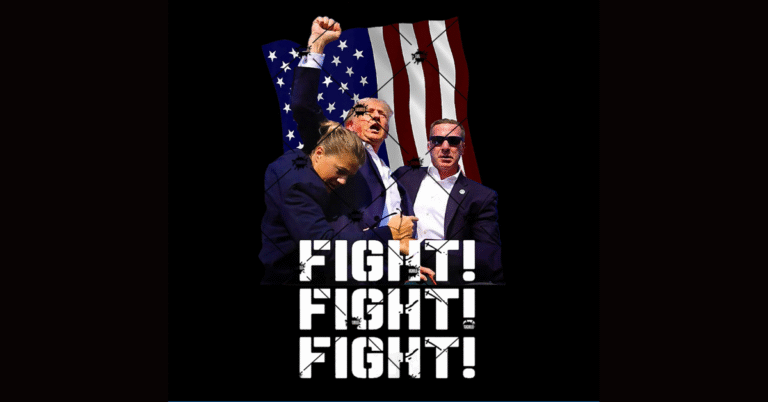The fight for Trump began as a political campaign slogan, but over time, it evolved into a powerful grassroots movement that has left a profound imprint on the American political landscape. This article explores how the fight for Trump mobilized millions, reshaped political norms, and stirred passionate emotions—both in support and opposition.
The Origins Of The Fight For Trump Movement
The term fight for Trump gained traction during the 2016 U.S. presidential campaign. It was more than a battle cry—it became a symbol of rebellion against the political elite, mainstream media, and long-standing government bureaucracy.
Supporters, feeling left behind by globalization and disillusioned with traditional politicians, saw Donald Trump as a disruptive force who would restore the “forgotten man and woman.” The fight was not just for a candidate—it was for a vision of America rooted in nationalism, economic protectionism, and conservative values.
Why The Fight For Trump Resonated With Millions
A Voice for the Voiceless
Millions of Americans felt their values were under attack. They believed that the American dream had faded due to job losses, immigration policies, and foreign interventions. Trump’s unapologetic rhetoric gave them a voice. For these citizens, the fight for Trump meant fighting for their own relevance.
Disdain for the Establishment
The movement thrived on a distrust of institutions. Whether it was Congress, the FBI, or news outlets, supporters felt the system was rigged against them. Trump promised to “drain the swamp,” reinforcing the idea that this was not just a campaign, but a crusade.
The Evolution Of The Fight For Trump (2015–2025)
| Phase | Focus | Key Events | Impact | Public Sentiment |
|---|---|---|---|---|
| 2015–2016 | Disruption of status quo | Campaign rallies, debates | Trump wins 2016 election | Energetic, hopeful |
| 2017–2019 | Governance and backlash | Travel ban, tax cuts, impeachment | Intensified media wars, policy changes | Polarized, energized |
| 2020 | Re-election and pandemic response | COVID-19, racial protests, election | Controversy over election integrity | Distrustful, mobilized |
| 2021–2022 | Post-election fight | Jan 6 Capitol event, social media bans | Trump impeached again | Defensive, embattled |
| 2023–2025 | Comeback attempt | Campaign 2024, legal battles | Rallying core supporters | Resolute, emboldened |
Each phase intensified the emotional and ideological divide, reinforcing that the fight for Trump was no fleeting trend—it was a new chapter in U.S. political history.
The Emotional Landscape: Why People Fight For Trump
Supporters exhibit fierce loyalty often rooted in emotion—pride, fear, and hope.
-
Pride in what they see as traditional American values.
-
Fear of cultural erosion, economic instability, and loss of identity.
-
Hope that Trump’s return will restore the nation’s greatness.
Opponents feel equally emotional but in opposition. This emotional duality fuels engagement, social conflict, and political mobilization.
Key Drivers Of The Movement
1. Populist Messaging
Trump’s straightforward, often controversial language connects with people who distrust politically correct discourse. This populist tone became the movement’s bedrock.
2. Digital Warfare
Social media was weaponized to bypass mainstream media. Supporters created communities where the fight for Trump was amplified 24/7. Memes, live streams, and viral content kept momentum high.
3. Political Martyrdom
Legal battles and censorship attempts only increased Trump’s appeal. Supporters interpreted these as proof the system was out to silence him—and, by extension, them.
Comparative Analysis: Fight For Trump vs. Traditional Political Campaigns
| Feature | Fight for Trump | Traditional Campaigns | Winner |
|---|---|---|---|
| Cost | High grassroots donation model | Reliant on big donors and PACs | Tie |
| Efficiency | Agile, media-driven mobilization | Structured but slower | Fight for Trump |
| Ease of Use | Digital platforms simplified engagement | Bureaucratic outreach | Fight for Trump |
| Scalability | Viral potential via internet | Geographic and institutional limits | Fight for Trump |
| Benefits | Emotional buy-in, loyalty | Policy-focused, but often bland | Fight for Trump |
The fights for Trump approach bypassed traditional campaign limitations by embracing chaos, emotion, and speed—reshaping how political engagement works.
Internal Conflicts And Fragmentation
Not all supporters agree on strategy. Some believe in peaceful advocacy, while others feel more radical action is needed. This created rifts in the movement, especially after incidents like the January 6 Capitol breach.
These internal conflicts also extend to legal issues, leadership struggles, and the role of religion and conspiracy theories within the movement. Still, the core remains united in its loyalty to Trump.
The Legal Battles: Fuel or Fire?
Trump’s ongoing legal issues—from election interference allegations to financial scrutiny—add complexity to the narrative. Instead of weakening his base, these challenges have galvanized it.
To them, the fights for Trump includes fighting against what they see as politically motivated persecution. It becomes a moral struggle, not just a legal one.
The 2024 Election: Reigniting The Fight
Trump’s re-entry into the 2024 election scene reignited enthusiasm. Massive rallies, fundraising spikes, and increased digital activism point to an energized movement.
This time, however, the fight is more calculated. The movement has learned from past mistakes, focused on voter turnout, and is attempting to appeal to independents without losing its core intensity.
Implications For American Democracy
Deepening Division
The movement has polarized the nation, often blurring the lines between patriotism and extremism.
Redefinition of Political Norms
Decorum, diplomacy, and precedent are no longer required. The fight for Trump normalized a new kind of politics—loud, raw, and emotional.
Rise of Citizen Journalism
Mainstream media distrust gave rise to an army of content creators who framed their own narratives, shaping how millions perceive reality.
Actionable Insights For Citizens
-
Understand the Movement: Whether you support it or not, understanding its motivations helps foster better dialogue.
-
Stay Informed: Rely on diverse sources to avoid echo chambers.
-
Engage Responsibly: Exercise democratic rights—vote, advocate, and participate without resorting to violence or misinformation.
-
Prioritize Unity Over Division: Respect different perspectives while standing firm in your values.
The Future Of The Fight For Trump
With Trump either returning to power or influencing politics from the sidelines, the fight for Trump will continue to evolve. It may inspire future candidates reshape Republican strategies, or fragment into different factions.
Regardless of outcomes, it has changed American politics forever. Its emphasis on emotional resonance, outsider identity, and loyalty over policy has left an indelible legacy.
FAQ’s
What does “fight for Trump” actually mean?
It refers to the political and ideological movement supporting Donald Trump, emphasizing nationalism, anti-establishment values, and voter mobilization.
Is the fight for Trump still active in 2025?
Yes, the movement remains highly active, particularly through digital platforms, legal support groups, and political rallies across the U.S.
Was the fight for Trump responsible for the Capitol riots?
While the movement inspired widespread protests, the actions on January 6 were carried out by a subset of supporters and condemned by others within the movement.
How does the fight for Trump affect future elections?
It sets a precedent for emotionally charged campaigns and high voter engagement, likely influencing political strategies across both parties.
Can someone support Trump but not be part of the movement?
Yes. Many voters align with Trump’s policies without subscribing to the broader fight-for-Trump identity or tactics.
How do opponents view the fight for Trump?
Many view it as a threat to democratic norms, often citing disinformation and authoritarian undertones as primary concerns.

